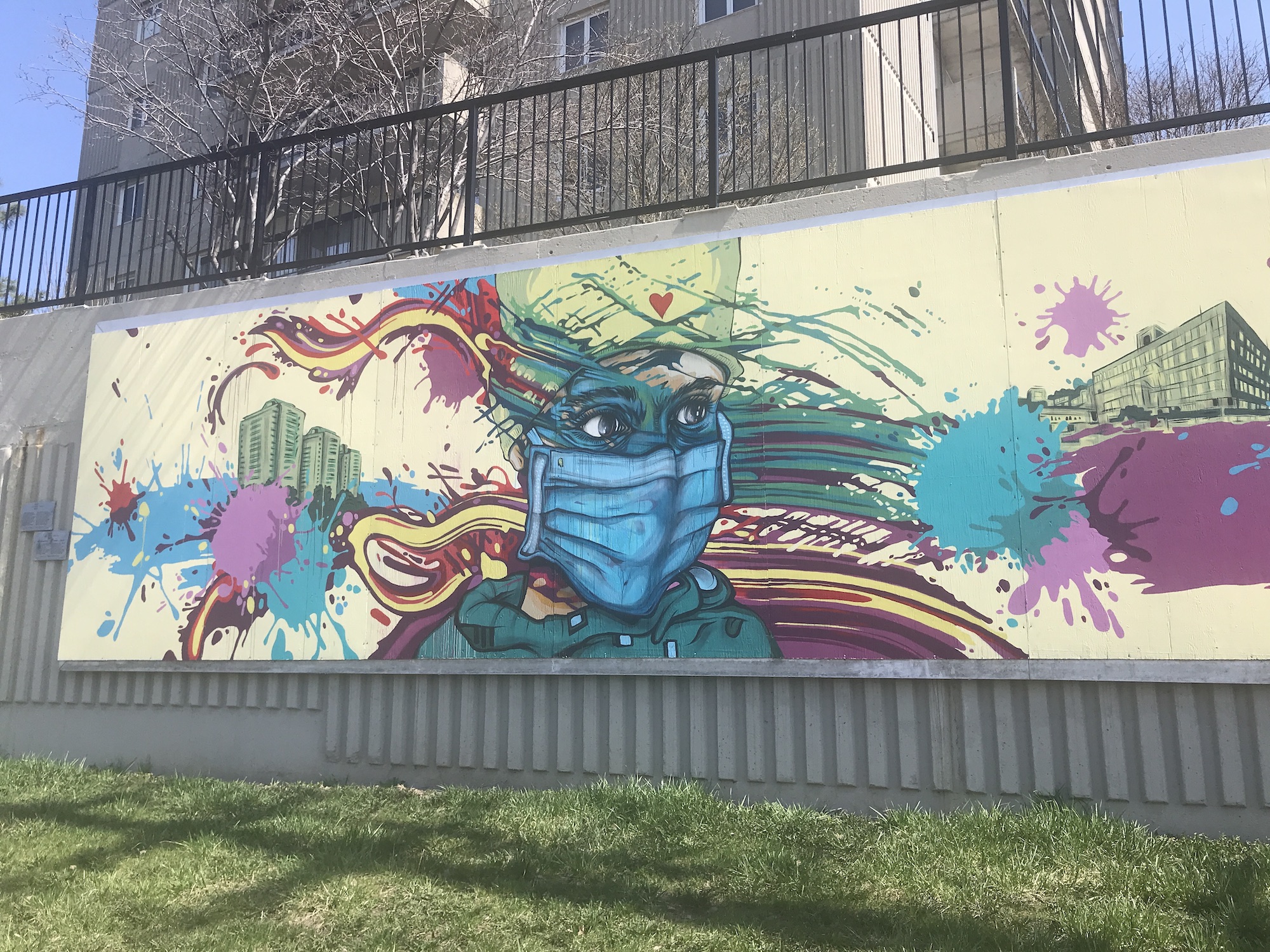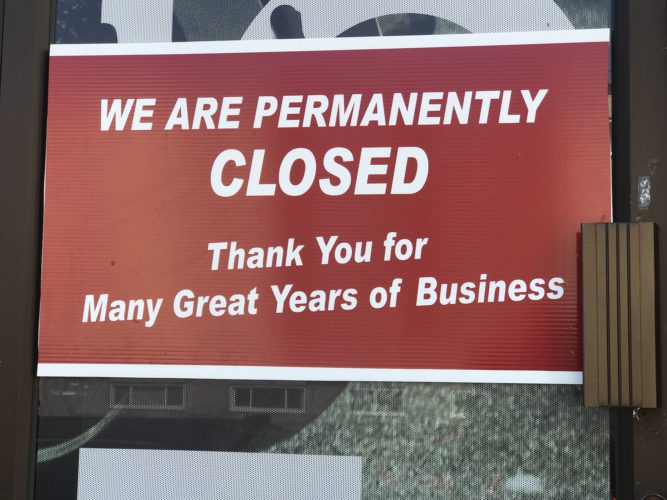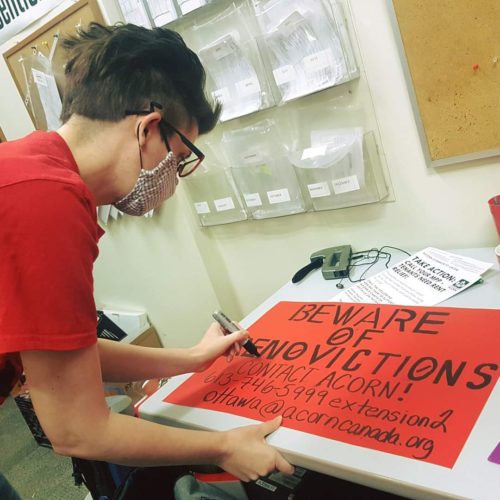COVID in Ottawa
Being in poverty is tough and COVID-19 just makes it tougher

caption
Street art along Vanier Parkway in OttawaAdvocates say government support programs let too many people fall through the cracks
Editor's Note
These data-driven stories on COVID-19 were prepared by King's MJ students.
As Ottawa residents face the third wave of COVID-19, not everyone is hoping for a return to normal.
“For a lot of people, normal was already a crisis before the pandemic,” said Meagan Wiper, co-chair of the Ottawa-Vanier chapter of ACORN, an advocacy group of low and moderate-income residents.
Wiper said that despite government support programs, many residents, including those with retail and customer service jobs, face difficult choices between earning enough to live and protecting against COVID-19.
“There are still too many people falling through the cracks,” she said. “There’s no paid sick leave, and they’re being paid a pittance, so a lot of people have no choice but to go work sick.”
COVID-19 affects marginalized communities most
Early in the pandemic, data showed that COVID-19 in Ottawa was having a bigger impact on marginalized communities. More than a year later, the pandemic is still taking the heaviest toll in neighbourhoods where people can least afford to protect themselves.
Wiper said housing conditions among people with low incomes increase the level of risk.
“I rent a room for $500 in a house where there are five other people,” she said. “That’s the only choice I have to have a roof over my head because of how high the rents are. If one of us brings it home … I mean, knock on wood, we haven’t.”
Of the 23 Ottawa wards, Gloucester-Southgate, Alta Vista and Rideau-Vanier have the highest cumulative rates of COVID-19 per 100,000 residents, according to data from the City of Ottawa. The cumulative rate is calculated using population size and the total number of residents in the area who have had confirmed cases of COVID-19. That makes it possible to compare geographic areas.
Those same three wards also have the highest percentage of residents who live below the low-income cut-off, based on data from the 2016 census. People living below this threshold are likely to spend 20 percentage points more of their after-tax income than average on food, shelter and clothing.
Low-wage workers face higher exposure
Jean Cloutier, the city councillor for Alta Vista ward, said many factors contribute to the high impact that COVID-19 is having on some parts of the city.
“Many members of our community are required to go to work each and every day, increasing their risk of exposure, very often in customer-facing roles,” he said.
Emilly Renaud is the national coordinator at Canada Without Poverty, an advocacy group led by people who have experienced poverty. She said the risk of exposure to COVID-19 weighs heavily on people in precarious, low-wage jobs who can’t afford to stay home.
“There’s a lot of health insecurity in terms of worrying about catching it,” she said.
“A lot of outbreaks happen in the workplace because it’s really hard to completely social distance.”
Earlier in the pandemic, Renaud worked at a local discount retailer.
“We did what we could, but there were just times when you have to go clock in and there’s a crowd of people around the machine,” she said.

caption
A business on McArthur Avenue in Ottawa’s Rideau-Vanier ward did not survive the pandemic.Existing health inequities magnify pandemic effects
The link between income and health in Ottawa was clear before the COVID-19 pandemic began. A 2016 report by Ottawa Public Health found that residents with low incomes were twice as likely to report fair or poor general health, over three times as likely to report fair or poor mental health, twice as likely to report two or more chronic conditions and twice as likely to smoke. Several of these factors are also associated with more negative outcomes from COVID-19.
With another stay-at-home order as Ontario copes with a crushing third wave, more people are out of work or having their hours cut. The Ontario government is being criticized for not providing support for these workers in its latest COVID-19 measures, but Renaud said that people need more than just paid sick leave. They need a reliable basic income.
“Not just a livable, survivable income, but a dignified income,” she said.
The Signal mapped low-income rates and COVID-19 in Ottawa. The maps show how much more acutely the effects of COVID-19 are felt in some areas. The darker the colour, the higher the rates of COVID-19. The map allows you to compare the situation in the electoral wards and the geographically smaller neighbourhoods.
See a larger version of the above map.
COVID-19 affects neighbourhoods across the city
Even though many of the hardest hit neighbourhoods are located in a few wards, low-income neighbourhoods in other parts of the city have also been disproportionately hit.
Katie Carr, program manager for the Ottawa Neighbourhood Study, said large ward sizes can mask important differences within communities. The neighbourhood study is a population health initiative started by the University of Ottawa in 2006. It has been collecting information on 111 distinct Ottawa neighbourhoods and has partnered with Ottawa Public Health to share COVID-19 data at the local level.
Carr said she prefers not to name communities to avoid perpetuating stigma associated with high COVID-19 rates. Nonethless, the group shares data on its website to promote transparency.
Some patterns are clear.
“We do see that COVID-19 is disproportionately affecting neighbourhoods that have more racialized residents, more refugees and newcomers, higher low-income prevalence and more single parent families,” Carr said.
Use the map below to compare the prevalence of low income in neighbourhoods to the cumulative rate of COVID-19 in the same areas.
See a larger version of the above map.
Support programs leave some residents behind
Cloutier, whose Alta Vista ward includes part of the hard-hit Ledbury–Heron Gate–Ridgemont neighbourhood, said that language and trust barriers can also mean that information isn’t getting to the people who need it.
The City of Ottawa set up a human needs task force in March 2020, which has been distributing masks, conducting wellness visits and coordinating programs to share information and provide support in hard-hit neighbourhoods. However, COVID-19 is still having a disproportionate effect.
In particular, Renaud said people who rely on precarious work, such as house cleaners or craftspeople, are left most vulnerable by the pandemic.
“It’s completely bulldozing over all sorts of informal work and the underground economy,” she said.
“Benefits were really only available to people who did their taxes, so you have a whole chunk of people who got left behind.”
Natalie Appleyard, a policy analyst at the advocacy group Citizens for Public Justice, said one key problem is that government support programs, such as the Canada Emergency Response Benefit, leave too many people out.
“Our system works well for the people it was designed for, but it’s not doing anything to improve the conditions for people who were already marginalized,” said Appleyard.
“Throughout the pandemic, we’ve seen how things like the CERB have really helped people weather this storm, but the fact remains that many people who are most marginalized by our systems weren’t even eligible.”
ACORN’s Megan Wiper said that two of the biggest challenges she sees at this stage of the pandemic are housing and access to affordable internet.
“Many people are facing eviction because CERB has run out or wasn’t enough. At the same time, renovictions and demovictions are on the rise,” she said, referring to cases where landlords evict tenants because they want to renovate or demolish their units.

caption
Meagan Wiper of ACORN Ottawa-Vanier campaigns for tenants’ rights in the city.Wiper said rising internet costs are also straining low-income budgets. In a 2016 ruling, the Canadian Radio and Telecommunication Commission declared broadband internet access a basic service. However, Canadians pay some of the highest internet rates in the world and not all low-income residents can afford it, even though the internet has become a primary lifeline during the pandemic.
In a 2019 survey by ACORN, almost half of respondents said they pay more than $70 per month, and one-third had been charged additional fees for exceeding their data allowance. Wiper said the pandemic is making things worse, since the internet is essential for attending online classes.
“We have low-income parents whose internet bills have been skyrocketing,” Wiper said. “They’re having to choose between paying for the internet or putting food on the table.”
Pandemic recovery plans need to close the gap
In the Fall, the City of Ottawa conducted a survey of lower income households to collect information about people’s need for social services during the pandemic, particularly in the areas of housing and food. One-fifth of people who responded said they regularly or occasionally ran of food before they had money to buy more, and almost one quarter identified a potential need for housing support in the next 12 months.
Appleyard said the post-COVID recovery needs to focus on closing inequities in the community.
“The pandemic efforts have stabilized things for people that were already stable, but it’s not closing the gap between the haves and the have nots” she said.
“We need to remove the barriers that are keeping us from honouring our human rights obligations.”

